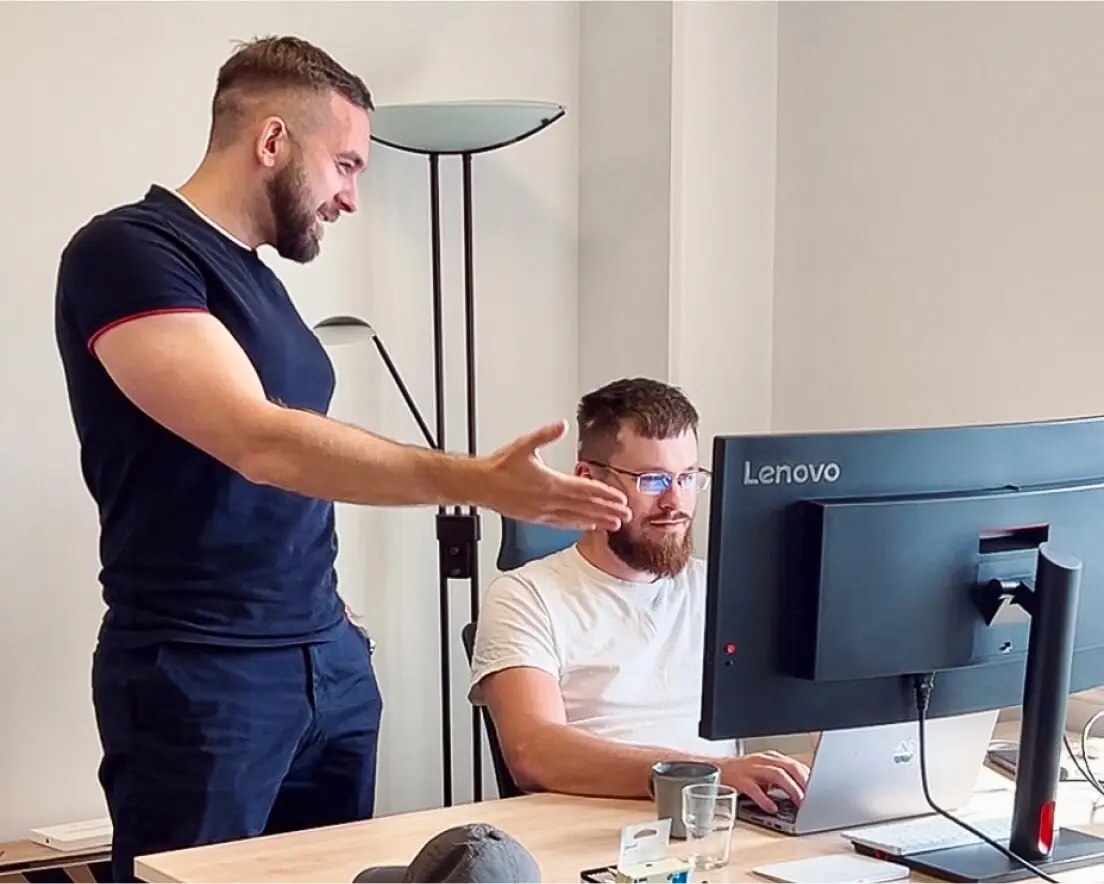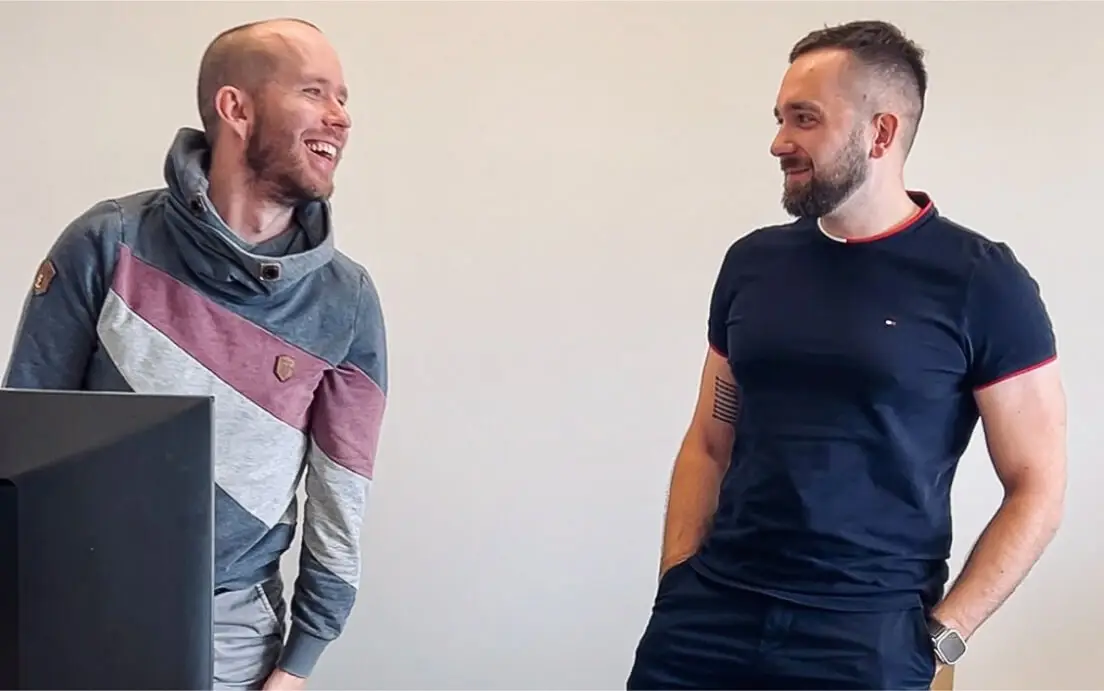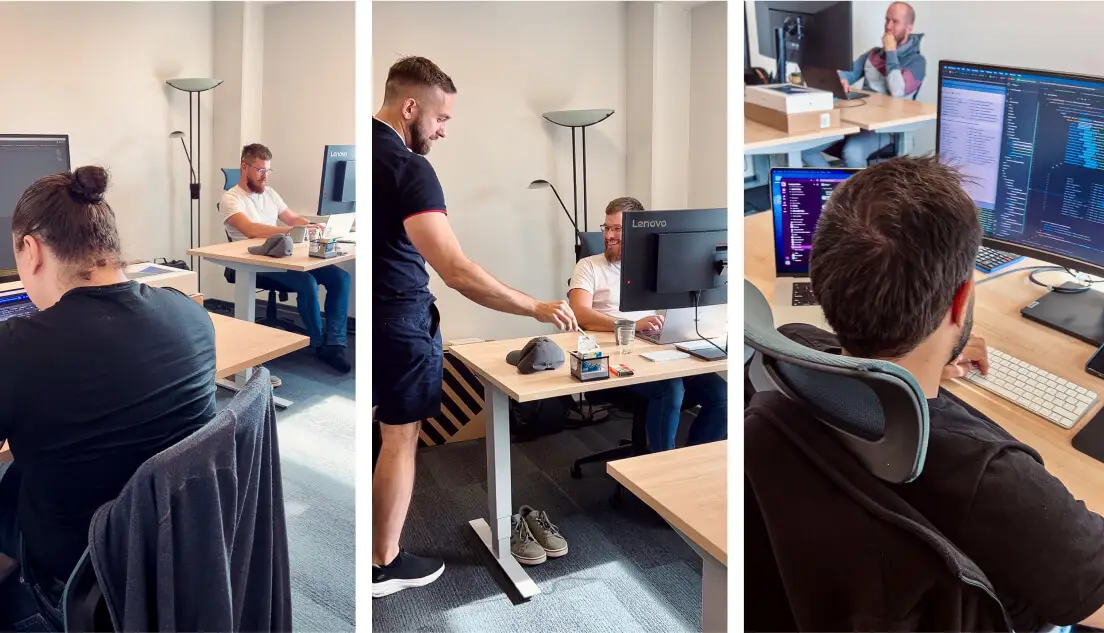I guess my journey started as a teen when I spent most of my time, as many boys do, playing video games. I think the year was 2005 or 2006 and everything was still more or less in its infancy on the internet compared to where we are now. I was still rather young, but I had a very specific problem – my clan needed a webpage. The rest is history, as they say. That particular problem, combined with my logical thinking, problem-solving skills, and fascination with new technology, set me on a very clear trajectory career-wise.
For nearly a decade, I spent most of my time hands-on in the code, engineering the best solutions I could envision for different-sized companies and learning a lot from many talented people around me.
But it became evident that, as an individual contributor, there was a ceiling for how impactful I could be. Hence, over the past five years, I’ve transitioned into leadership roles, where I found joy in guiding people and teams to deliver innovative solutions.
Lendermarket attracted me because of its dynamic environment, commitment to innovation, and potential to influence the P2P lending space significantly. The opportunity to shape the technical roadmap for a growing company in a burgeoning industry was a perfect fit for my skills and vision.
The Lendermarket 1.0 platform was always meant to be a stopgap, but at some point, Lendermarket grew so much, so quickly, that moving away from it became a challenge in itself.
The new version of our platform is a significant leap forward in several areas. First and foremost, we’ve overhauled the underlying architecture to ensure greater scalability and performance. We’ve integrated a microservices-based architecture, allowing us to make modular updates and scale different components independently based on usage demands.
But what does all this mean for investors? Although we are still catching up with some of the functionalities that investors lost during the migration from Lendermarket 1.0 to Lendermarket 2.0, I hope the progress has been visible and significant. It will only continue to accelerate, as the main benefit of the new platform is its scalability and ease of implementation compared to the old one.

Although I joined in October 2023, the actual development of the platform had already been ongoing since 2022. During the period before going live with Lendermarket 2.0, the team had to focus on both platforms at the same time, and before I joined, they actually had to implement every new idea or feature twice, which, as you might assume, made progress on the new platform slow and cumbersome.
At first, there was a lot of back and forth just to update the old platform, but with the platform’s growth, the team discovered deeply rooted architectural problems, which sadly meant there was only one option left – to start from scratch.
This gave us a blank canvas to do things correctly but also presented us with a challenge: how to bring all of the investors’ data and investments over to the new platform. In the end, the decision was to bring investors over straight away and migrate their funds gradually for the benefit of all.
Also, as mentioned before, the new platform is built with scalability in mind, and I’m personally quite excited to see how everything operates when the platform grows two, five, or ten times.
The Lendermarket 2.0 platform delivers a much more intuitive and responsive user experience. We’ve completely redesigned the user interface to be more user-friendly, focusing on a clean design and better navigation.
Those who have been with us since the very launch might remember that this is already the second iteration of our design, a vast improvement over the first. The goal here is to make a lot of small improvements quickly to provide the most value in the shortest time to our investors.
Yes, there are several exciting features in the pipeline! Some of these have already reached production, such as reports for “My Investments” and “Statement”.
These will be followed by:
These are the biggest upcoming developments we are currently working on, but at the same time, many smaller changes and improvements are always being made.

To me, there are several well-established and emerging technologies poised to potentially transform the P2P lending landscape significantly.
At Lendermarket, we take a proactive and multi-layered approach to managing technological risks. Security is integrated into every stage of development, from system design to feature deployment. We employ cutting-edge encryption, firewalls, and security protocols to protect our systems and users.
Our technological approach is linked to this ambition, emphasising scalability, security, and ongoing innovation. By adopting a modular, microservices architecture, we position the platform to adapt to evolving market demands. Our dedication to data analytics and machine learning will empower users with valuable insights in the near future, enabling them to make informed investment decisions.

Personal interest in both technology and finance is paramount. Fintech serves to connect two intricate sectors; thus, it is vital to be proficient in both areas. The fintech world, with its regulations, moves almost as quickly as technology advances, and keeping these two in sync can sometimes be a tricky task.
I would also say that a strong technical background and communication skills are essential. As a CTO, you’ll need to translate complex technical concepts for non-technical stakeholders and lead teams with diverse skill sets.
Given the rapid evolution of the fintech sector, it is crucial to remain receptive to new technologies and concepts. Mastering the art of balancing innovation with practicality—recognising when to embrace risks and when to adopt a cautious approach—is essential in this field.
This exclusive offer is the sequel to the Summer Max-Out campaign and allows investors to lift bonuses up to €3,000. Deposit and invest new funds fully between August 12 and September 24, 2024, and earn your bonus.
Let Lendermarket Pay for Your Christmas - enjoy up to 3% bonus!